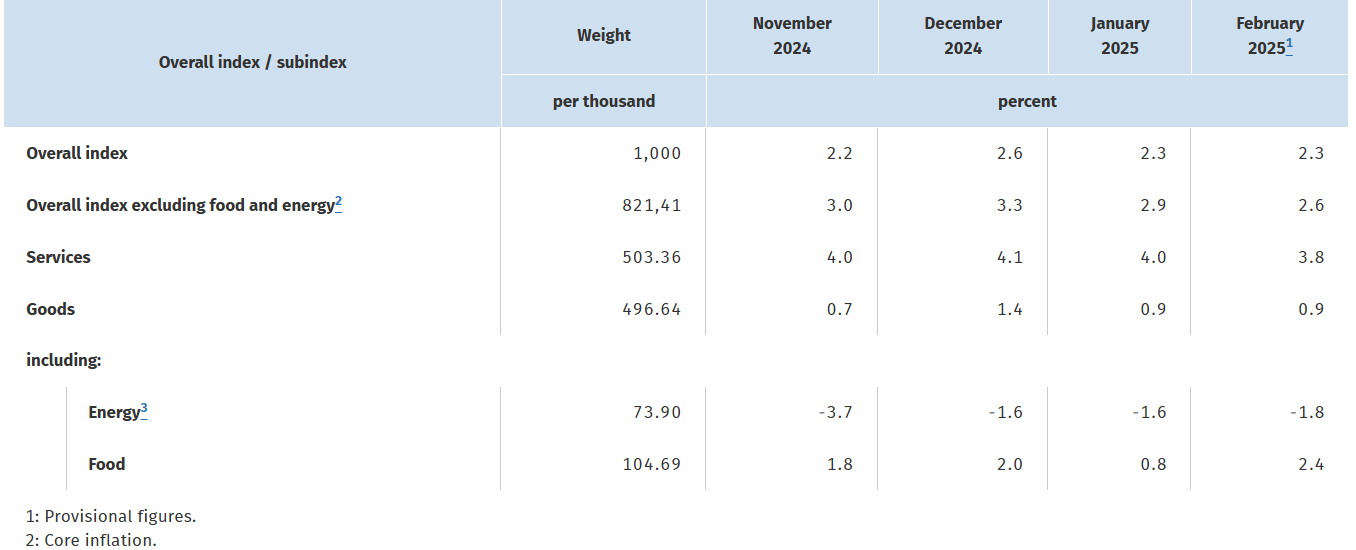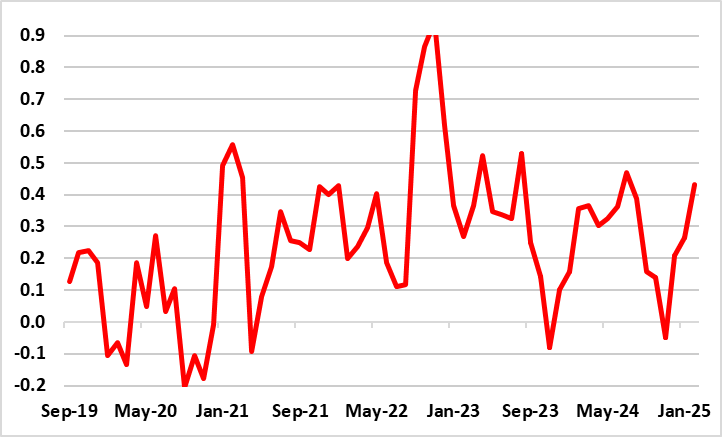German Data Review: Stable Headline but Belated Drop in Services Inflation
As Germany faces possibly deeper and more prolonged political deadlock, its disinflation process continues, but there are signs that the downtrend is flattening out and this may be the message into the rest of 2025. Indeed, as was the case in January, HICP inflation stayed at 2.8% in February, a notch higher than expected, but almost solely due a pick-up in food inflation. Instead, perhaps clearer disinflation news was evident in the national CPI news (Figure 1) where the core fell back 0.3 ppt to 2.6% and services eased 0.2 ppt to cycle-low of 3.8%. Even so, adjusted m/m data still show some uptick in core rates (Figure 2), but possibly a result of one-off new year annual price adjustments.
Figure 1: Services Inflation Persistence?

Source: German Federal Stats Office, % chg y/y
As for the looming EZ HICP February flash we still think they may deliver better news and broadly so and thus contrast with the mixed messages in the higher-than-expected EZ January numbers where the headline rose but by ‘only’ 0.1ppt, to a six-month high of 2.5%, but where the core (again) stayed at 2.7%, partly due to what is seemingly relatively stable services inflation (3.9%). February may see a further energy cost rise but partly masked by base effects should see both the headline, core and services rate down around 0.2 pp. However, shorter-term price momentum data and persistent measures already suggest that core and even services inflation have slowed and are running around target.
Figure 2: Recent Adjusted Core Rate Far Less Weak?

Source: German Federal Stats Office, CE, % chg m/m adjusted and smoothed
Over and beyond what the German CPI breakdown suggests, backing this picture of a belated fall in services inflation across the EZ are the results of other national HICP readings for February. Indeed, French inflation fell to the lowest in four years, while in Italy the outcome was lower than expected. Both saw slowdowns in services inflation measures, as was the case seemingly in Spanish data